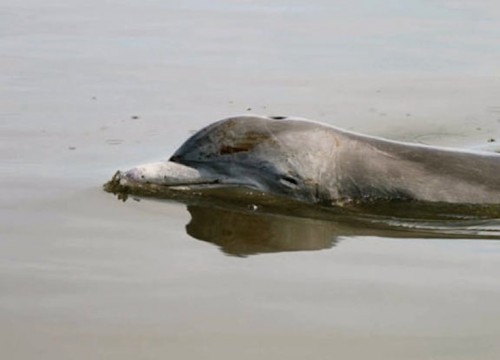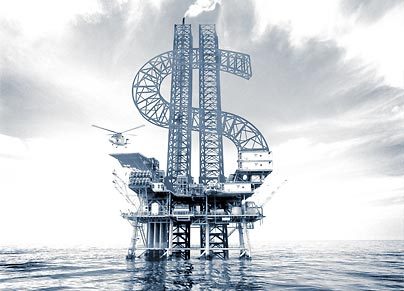Beyond the Deepwater Horizon
April 21, 2014
On April 20, 2010, the ultra-deep drilling rig Deepwater Horizon operating 5,000 feet below the surface of the Gulf of Mexico exploded, killing 11 men and injuring 17 others. In the 87 days that the gusher flowed uncontrolled, it spewed over 200 million gallons of oil into an already stressed Gulf ecosystem.
Now, four years later we’d like to share with you several important pieces shedding light on just a few aspects of the cascading problems in Mission Blue’s Gulf of Mexico Deep Reefs Hope Spot, as well as the surrounding coastal areas of the Gulf Coast from Texas to Florida.
Mission Blue would like to thank the honor roll of dedicated scientists, NGOs, grassroots organizations, government agencies, and citizens who continue to work tirelessly both to restore the Gulf, and to change future policies for a healthier tomorrow.
“We’re four years into this disaster, not four years after it. This is an ongoing disaster,” said Terese Collins, Gulf Islands Conservancy.

1. Gulf Dolphins in Poor Health after Spill – NOAA
A collaborative study led by NOAA and released late in 2013 has found that dolphin populations in the Gulf of Mexico where contamination from the BP Disaster occurred are suffering from serious health problems and that many are close to death.
“I’ve never seen such a high prevalence of very sick animals — and with unusual conditions such as the adrenal hormone abnormalities,” Lori Schwacke, the study’s lead author said, in a statement.
The research team temporarily captured 32 dolphins from the oil-soaked Barataria Bay and conducted comprehensive tests including ultrasound scans on 29 dolphins, before releasing them. The team also studied another batch of dolphins from Sarasota Bay, Fla., which was not affected by BP’s oil spill.
2. From Dolphins to Loons, Gulf Species Still Reeling From Deepwater Horizon Disaster
Death at Seaworld‘s author, David Kirby gives the rundown on a new report from the National Wildlife Federation, “Four Years Into the Gulf Oil Disaster: Still Waiting for Restoration.” The report analyzed data on 14 Gulf wildlife species and found daunting roadblocks to their full recovery in the still-contaminated waters.
Oyster reproduction remained low in large swaths of the Gulf at least through the fall of 2012. Petrochemicals from the Deepwater disaster were linked to irregular heartbeats in bluefin and yellowfin tuna. Loons have elevated levels of petrochemicals in their bloodstream. And sperm whales have high levels of “DNA-damaging metals” found in oil from BP’s well.
3. The Deepwater Horizon Threat
New York Times Op-Ed by policy experts Elizabeth Birnbaum, consultant at SEB Strategies, and director of the Minerals Management Service at the time of the Deepwater Horizon blowout, and Jacqueline Savitz of Oceana. They charge that the administration has taken few steps in wake of 2010 Deepwater Horizon disaster to prevent similar occurrences in future. Further, they stress that another drilling-related fiasco is likely to reoccur, and that prospect is exacerbated by expansion in offshore drilling and lag in safety technology. The article is a call for increased safety measures and careful consideration of risks.
4. The Great Invisible – South by Southwest Film Festival winner
Margaret Brown and Participant Media’s latest, The Great Invisible is a chilling corporate thriller and heartbreaking human drama about the Deepwater Horizon oil spill through the stories of people – from rig workers to Gulf Coast residents – still recovering from the aftermath long after the world moved on.
5. Ban Lifted, BP Bids $42 Million to Win Gulf Oil Leases in U.S. Auction
And on March 19, shocking news came out in the New York Times.
“Just days after the United States lifted a ban on new oil and gas leases for BP, the company took full advantage of the opportunity. In an auction held in New Orleans on Wednesday, BP was the high bidder on 24 exploration blocks in the Gulf of Mexico for about $42 million, according to the Interior Department.”
One of the biggest concerns centers on the blowout preventers, which seal wells in blowouts and are the last line of defense for events like the Deepwater Horizon. It’s unfathomable that the administration has failed to act on the findings of the December 2011 report of the National Academy of Engineering, which condemned the so-called blowout preventers and BP’s lack of adherence to safety policies.
Yet here we are, four years later and what have we done with what we have learned? It’s clear that the administration has allowed BP with it’s dubious safety reputation to get back to business as usual with little more than a slap on the wrist.
Please join Mission Blue in supporting one of the many great organizations working to restore and protect our Gulf of Mexico Hope Spot!
By Deb Castellana / Mission Blue
Feature Photo: Courtesy of the Gulf Restoration Network










For the scoffers in other parts of the country (or even as “far away” as San Antonio) who believe that the spill has been cleaned up, can you provide links to some of the best scientific articles on the impact on the marshes?
In my view, Carla, one of the most important ones is this story about the discovery by investigators from Stanford relating to cardiac impacts. http://news.stanford.edu/news/2014/february/tuna-oil-toxicity-021314.html